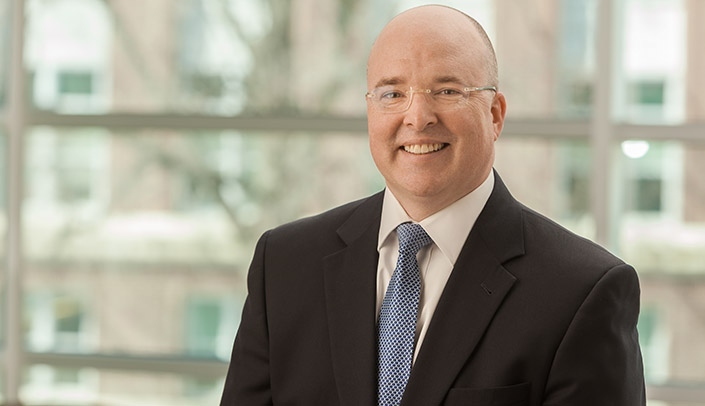Last July, President Trump launched a new initiative to improve kidney health in America.
A quick look at the numbers shows what a significant problem it is:
About the kidneys
The role of the kidneys is to filter your blood by removing waste and excess fluid from your body. This waste is sent to the bladder to be eliminated when you urinate.
Properly functioning kidneys prevent extra water, waste, and other impurities from accumulating in your body. They also help control blood pressure and regulate the levels of chemical elements in the blood, such as sodium and potassium. End-stage kidney failure occurs when the kidneys are performing at only 10 to 15 percent of their normal function.
Dialysis, which has been used since the 1940s, performs the function of the kidneys if they’ve failed. It’s a treatment that filters and purifies the blood using a machine. This helps keep fluids and electrolytes in balance when the kidneys can’t do their job.
Dialysis can help keep the body running as normally as possible. Without dialysis, salts and other waste products will accumulate in the blood, poison the body, and damage other organs. Dialysis isn’t a cure for kidney disease or other problems affecting the kidneys. Different treatments, such as kidney transplantation, may be needed to address those concerns
A typical dialysis session will remove between 4-10 pounds of fluid from the body, said Troy Plumb, M.D., chief of the nephrology division at UNMC.
- Kidney disease ranks as the ninth leading cause of death in America;
- 37 million patients suffer from chronic kidney disease;
- Nearly 100,000 Americans are on the waiting list to receive a kidney transplant;
- Of the more than 100,000 Americans who begin dialysis to treat end-stage kidney disease (ESKD), one in five will die within a year;
- Every day, more than 240 people on dialysis die; and
- Approximately 20 percent of Medicare dollars — $114 billion a year — are spent on caring for patients with kidney disease.
One of the key goals of the president’s initiative was to have 80% of new ESKD patients in 2025 either receiving dialysis at home or receiving a kidney transplant.
With only 12% of patients currently receiving their dialysis at home, it’s pretty obvious that a major shift needs to be made to reach the 80% goal within five years.
At UNMC/Nebraska Medicine, the push for more patients to receive home dialysis has been ongoing, said Troy Plumb, M.D., the Dennis Ross Chair and Chief of the Internal Medicine Division of Nephrology.
Dr. Plumb served as principal investigator last year on a clinical trial looking at the Tablo home dialysis system. The Tablo system, which was approved by the Food and Drug Administration in early April, is the first new technology for home hemodialysis in nearly 15 years.
Dr. Plumb and his team of 10 nephrologists, nephrology fellows, nurse practitioners and nurses are committed to getting more people with ESKD to consider getting their dialysis at home rather than going to a dialysis center.
So far, so good. The overall percent of patients performing home dialysis (peritoneal or hemodialysis) at UNMC/Nebraska Medicine is twice the national average, but the percent of patients doing home hemodialysis is much more than that. Dr. Plumb estimates that the UNMC/Nebraska Medicine nephrology team has nearly 10 times the national average of patients performing home hemodialysis.
About ESKD
Here are some interesting facts on end-stage kidney disease (ESKD):
- In 2016, nearly 125,000 people in the U.S. started treatment for ESKD;
- More than 726,000 (2 in every 1,000 people) are on dialysis or living with a kidney transplant;
- For every two women who develop ESKD, three men develop ESKD;
- African Americans are about three times more likely than whites to develop ESKD;
- For every three non-Hispanics who develop ESKD, four Hispanics develop ESKD;
- In the U.S., diabetes and high blood pressure are the main causes of ESKD in adults aged 18 years or older, while polycystic kidney disease and glomerulonephritis (inflammation of the kidneys) are the main causes of ESKD in children and adolescents younger than 18 years.
With hemodialysis, the most common type of dialysis, an artificial kidney removes waste and filters the blood. With peritoneal dialysis, which can be performed while the patient is sleeping or awake, the blood is filtered by a catheter implanted in the abdomen.
Whether you do it at home or at a center, “dialysis is tough,” said Dr. Plumb, who is an associate professor. “There are constant ups and downs.”
At a center, people typically come three times a week, and it takes about four hours for each appointment.
At home, treatments last about 2 ½ – 3 hours and are given between four and six times per week.
“Independence is probably the biggest reason for people to do home dialysis,” Dr. Plumb said. “People say they are more comfortable, productive and empowered when they do it at home. They are more invested. They say they feel better than doing it at a center.
“But, there are trade-offs. Some people say it’s too much work at home. Some of the home hemodialysis patients require a care partner who can help them with their treatments.”
A Transitional Care Unit has been established for Nebraska Medicine patients in order to educate them on home dialysis, he said.
The bottom line — “We want to give people the choice.”

Good work Dr. Plumb and team!
Dr. Plumb and the nephrologist team at UNMC is the best! They are caring people who treat their patients with respect and I am so glad they are able to do what they can for ESKD.